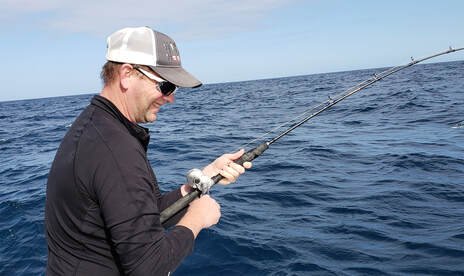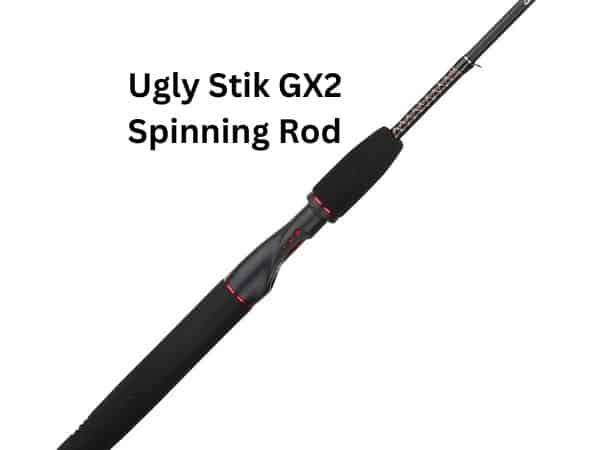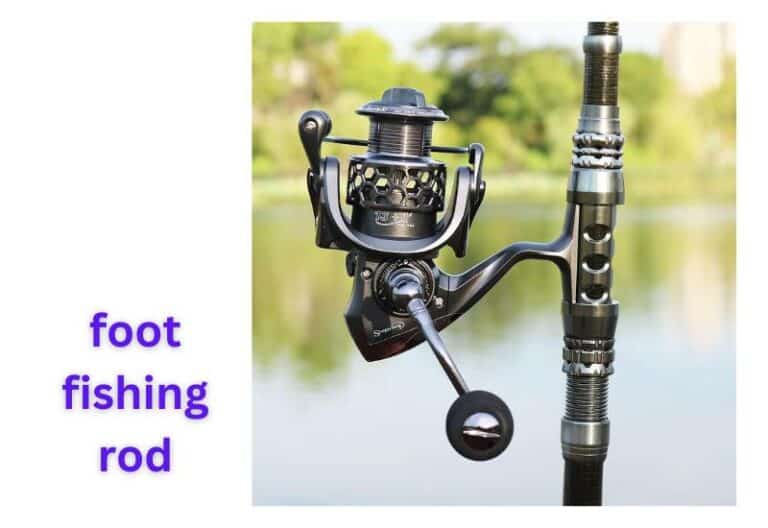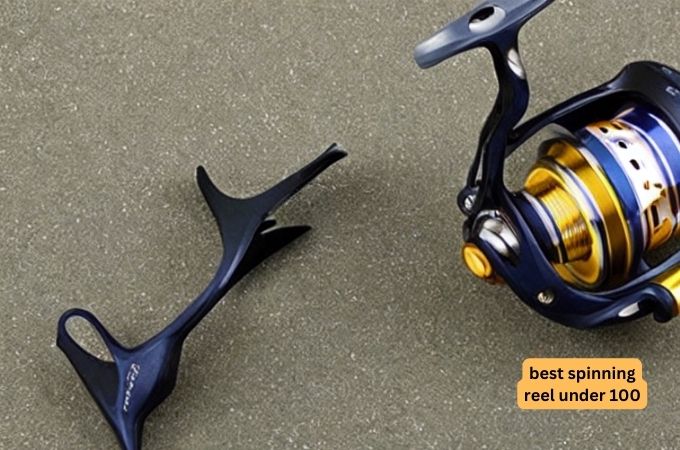Master The Correct Way To Hold A Fishing Rod
When it comes to fishing, knowing the correct way to hold a fishing rod is essential for a successful and enjoyable experience. So, how exactly should you hold that rod? Don’t worry, we’ve got you covered! In this article, we’ll guide you through the proper technique, giving you the confidence to cast your line and reel in those fish. Whether you’re a beginner or have been fishing for years, mastering this fundamental skill will undoubtedly improve your chances of landing the big one. Get ready to enhance your fishing skills as we dive into the art of holding a fishing rod.
The Correct Way to Hold a Fishing Rod
Fishing is not only a relaxing hobby but also a popular sport enjoyed by millions of people around the world. Whether you are a beginner or an experienced angler, understanding the correct way to hold a fishing rod can significantly improve your fishing technique and increase your chances of success. In this article, we’ll provide you with a comprehensive guide on the correct way to hold a fishing rod, covering essential tips and techniques to enhance your fishing experience.
Section 1: Understanding the Basic Components of a Fishing Rod
Before we delve into the correct way to hold a fishing rod, let’s first familiarize ourselves with the basic components of a fishing rod. Knowing the different parts of a fishing rod will give you a better understanding of how to hold it correctly. Here are the key components of a fishing rod:
Fishing Rod Handle
– The handle is the part of the fishing rod that you grip while fishing.
– It is usually made of cork, EVA foam, or hypalon to provide a comfortable and secure grip.
– The handle length can vary depending on the type of fishing rod and personal preference.
Reel Seat
– The reel seat is located above the handle and is used to attach the fishing reel to the rod.
– It consists of a hood and a screw that secure the reel in place.
– Ensure the reel seat is properly tightened to prevent any movement while fishing.
Guides
– Guides, also known as eyelets, are the small loops attached along the length of the fishing rod.
– They guide the fishing line from the reel to the tip of the rod while reducing friction and preventing line tangles.
– Make sure the guides are properly aligned and free from any damage.
Tip
– The tip is the uppermost section of the fishing rod.
– It is the most sensitive part of the rod and helps detect bites and movements.
– Take extra care to protect the tip from damage as it affects the rod’s overall performance.
Section 2: Factors to Consider When Holding a Fishing Rod
To achieve the correct way of holding a fishing rod, you must consider various factors that contribute to a comfortable and effective grip. Here are some key factors to keep in mind:
Rod Length and Weight
– The length and weight of the fishing rod play a crucial role in determining the most suitable grip.
– Longer and heavier rods generally require a two-handed grip for better control and casting distance.
– Shorter and lighter rods can be comfortably held with a one-handed grip.
Casting Techniques
– Different casting techniques require specific hand placements on the fishing rod.
– For overhead casting, grip the rod handle with your dominant hand and place your other hand on the reel for support.
– For sidearm or underhand casting, hold the rod handle with your dominant hand and let your other hand provide stability near the reel.
Flexibility and Sensitivity
– A firm but flexible grip is essential to allow the fishing rod to bend and absorb the fish’s movements.
– Hold the rod with a relaxed grip to enhance sensitivity and feel even the slightest bites.
– Avoid gripping the rod too tightly, as it can hinder the rod’s action and reduce sensitivity.
Environmental Conditions
– Consider the environmental conditions, such as wind, current, and the size of the fish you are targeting.
– In windy conditions, holding the rod with both hands provides better control and casting accuracy.
– When fishing near strong currents or targeting larger fish, a two-handed grip offers more power and stability.
Section 3: The Correct Way to Hold a Fishing Rod
Now that we have covered the essential factors to consider, let’s dive into the correct way to hold a fishing rod for different fishing scenarios:
One-Handed Grip
– The one-handed grip is suitable for shorter fishing rods and light to medium fishing applications.
– Hold the fishing rod handle with your dominant hand, allowing your index finger to rest on top of the rod for better control.
– Place your thumb on the underside of the rod handle, opposite your fingers, for added stability.
– The one-handed grip provides flexibility and allows for quick adjustments while reeling in fish.
Two-Handed Grip
– The two-handed grip is commonly used for longer fishing rods and when casting for distance or fighting larger fish.
– Hold the fishing rod handle with your dominant hand, similar to the one-handed grip.
– Place your other hand on the foregrip or just above the reel seat for added support and control.
– The two-handed grip offers better leverage, power, and control, especially when dealing with strong fish or challenging conditions.
Section 4: Tips and Techniques for Holding a Fishing Rod
To further enhance your fishing experience, consider the following tips and techniques for holding a fishing rod:
Practice Your Grip
– Familiarize yourself with different grip styles to find the one that feels most comfortable and natural for you.
– Practice your grip before heading out to the water to build muscle memory and improve overall control.
Maintain a Relaxed Grip
– Avoid gripping the fishing rod too tightly, as it can lead to hand fatigue and restrict the rod’s movement.
– Maintain a relaxed grip to allow for more flexibility and sensitivity while fishing.
Adjust Your Grip as Needed
– Depending on the fishing technique or the changing conditions, be ready to adjust your grip accordingly.
– For example, in situations where you need to cast with more power, transition from a one-handed grip to a two-handed grip.
Protect the Rod Tip
– The rod tip is vulnerable to damage, especially when transporting or storing your fishing gear.
– Use protective rod covers or tubes to safeguard the tip and prevent it from snapping or breaking.
Experiment with Rod Angles
– Depending on the fishing technique, water conditions, and target species, experiment with different rod angles to find the most effective position.
– Adjusting the rod angle can help control the line, reduce line drag, and improve hook-setting ability.
Section 5: Conclusion
Mastering the correct way to hold a fishing rod is essential for every angler looking to improve their fishing skills. By understanding the basic components of a fishing rod, considering important factors, and implementing proper grip techniques, you can enhance your casting accuracy, power, and sensitivity. Remember to practice your grip, maintain a relaxed hold, and adjust your technique as needed. With time and experience, you will develop your own style and find what works best for you. So, grab your fishing rod, head out to the water, and enjoy the wonderful world of fishing!
How to Hold a Spinning Rod – Fishing Tips for Beginners
Frequently Asked Questions
How should I hold a fishing rod?
The correct way to hold a fishing rod is to grip it firmly but not too tightly. Place your dominant hand on the handle of the rod and wrap your fingers around it for a secure grip. Your other hand should be positioned on the rod above the reel to provide additional support and control. This grip allows you to have a good balance and sensitivity while fishing, enabling you to feel even the slightest nibbles or movements underwater.
What is the importance of holding a fishing rod correctly?
Holding a fishing rod correctly is crucial for several reasons. Firstly, it allows you to have better control over the rod and the line, resulting in more accurate and effective casting. Secondly, the correct grip ensures that you can feel even the subtlest movements, increasing your chances of detecting bites and hooking fish. Moreover, holding the rod properly helps to prevent hand and wrist fatigue, making your fishing experience more comfortable and enjoyable.
Should I use both hands to hold the fishing rod?
Yes, it is advisable to use both hands to hold the fishing rod. While your dominant hand provides the primary grip on the rod’s handle, your other hand should be placed above the reel for support. This two-handed technique enhances your control over the rod, improves sensitivity, and reduces the likelihood of losing your grip when battling a fish.
How tightly should I grip the fishing rod?
You should grip the fishing rod firmly but avoid squeezing it too tightly. A firm grip allows you to maintain control and sensitivity while casting, retrieving, and fighting fish. However, excessive pressure can inhibit your ability to feel subtle bites and may cause unnecessary hand fatigue. Find a balance and grip the rod with just enough pressure to ensure a secure hold without impeding your fishing performance.
What are some common mistakes to avoid when holding a fishing rod?
When it comes to holding a fishing rod, there are a few common mistakes to avoid. First, avoid gripping the rod too tightly, as it can reduce sensitivity and lead to fatigue. Additionally, refrain from holding the rod too close to the reel, as this can limit your control and casting accuracy. Lastly, try not to hold the rod too far down the handle, as it can affect your leverage and make it challenging to reel in larger fish.
Can I adjust my grip on the fishing rod while fishing?
Yes, you can and should adjust your grip on the fishing rod as needed. It is common to shift your hand position slightly up or down the rod’s handle, depending on the fishing technique, casting distance, or fighting a fish. Experiment with different grip positions to find what works best for you, ensuring a comfortable and effective fishing experience.
Final Thoughts
The correct way to hold a fishing rod is crucial for ensuring a comfortable and effective fishing experience. By holding the rod with a relaxed grip and positioning the thumb on top of the handle, anglers can maintain better control and accuracy while casting and reeling in fish. It is also important to keep the wrist straight and avoid gripping the rod too tightly, as this can lead to fatigue and reduced sensitivity. By following these guidelines, fishermen can enhance their fishing techniques and increase their chances of success. So remember, always practice the correct way to hold a fishing rod to elevate your fishing skills.





